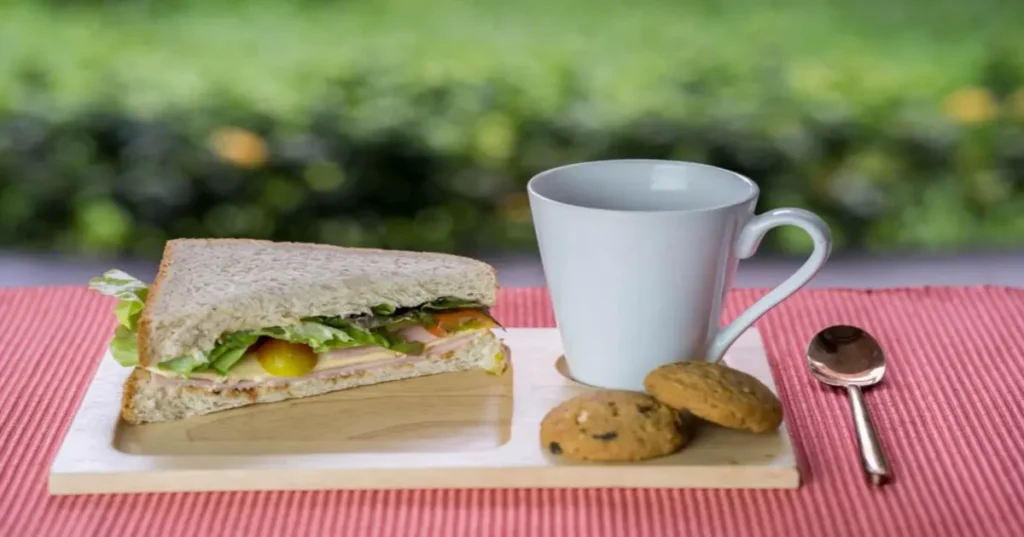
Introduction
Tea and sandwiches have long been part of social traditions, often symbolizing elegance and sophistication. Though simple, they carry deep historical and cultural significance. This article explores how the rank associated with tea and sandwiches has evolved over time and how it continues to hold a place in both history and modern society.
The Rise of Tea: A Symbol of Prestige
Tea, originally used in China as a medicinal drink, gradually spread across Asia and Europe. By the 17th century, it reached Britain, where the wealthy quickly adopted it. The upper classes could afford imported tea, and it soon became a symbol of wealth and social standing. This created a distinct rank associated with tea and sandwiches, as the combination became essential in gatherings among the elite.
Tea drinking wasn’t just a habit; it was an event. The British aristocracy hosted elaborate tea gatherings, where the combination of tea and sandwiches allowed people to display their refined tastes and social rank. As it grew, so did the influence of afternoon tea as a symbol of high society.
The Sandwich: A Touch of Elegance
The sandwich, as we know it today, was invented in the 18th century by John Montagu, the 4th Earl of Sandwich. The story goes that he requested his meat to be placed between slices of bread so he wouldn’t get greasy while playing cards. This idea quickly gained popularity and added to the rank associated with tea and sandwiches. As time passed, sandwiches became a staple of social gatherings, especially when paired with tea.
As the rank associated with tea and sandwiches grew, so did the variety of sandwiches served at these gatherings. The upper classes began serving delicate sandwiches with fillings like cucumber, egg, and smoked salmon, elevating the occasion and adding to the elegance of these events.
Afternoon Tea: A Tradition of Social Rank
Afternoon tea, as we know it today, was introduced in the early 19th century by Anna, the Duchess of Bedford. She wanted a light meal between lunch and dinner and started having tea with small snacks, including sandwiches. This idea quickly caught on and became a social event among the British elite. The rank associated with tea and sandwiches during these gatherings was significant, as they were the perfect opportunity for the wealthy to display their status.
By the 19th century, afternoon tea had evolved into a well-established tradition, where the wealthy gathered to enjoy fine tea and light sandwiches. This event became more than just a meal—it became a means of showcasing one’s social standing. The rank associated with tea and sandwiches became undeniable, as those who could afford such luxury were seen as the epitome of good taste and class.
Tea and Sandwiches: The Hallmarks of High Society
The combination of tea and sandwiches became synonymous with social rank. In the 19th and early 20th centuries, hosting afternoon tea became a way for the upper class to display their status. The sandwiches served were carefully prepared and often featured elegant fillings like cucumber and smoked salmon, making them more than just snacks. These sandwiches became an expression of wealth and sophistication. The rank associated with tea and sandwiches represented an era of opulence and refinement.
The types of sandwiches served were important too. Cucumber sandwiches, for example, were considered the epitome of refinement and luxury. These sandwiches were often made with fresh, thin slices of cucumber and served with the crusts removed, creating a delicate, visually appealing snack that underscored the rank associated with tea and sandwiches.
Modern-Day Tea and Sandwiches: A Refined Yet Accessible Tradition
Today, tea and sandwiches are no longer exclusive to the elite, but they still maintain an air of sophistication when served in formal settings. Many upscale hotels and restaurants continue to offer afternoon tea, keeping the tradition alive. While tea and sandwiches are more accessible today, they continue to symbolize elegance during special occasions. The rank associated with tea and sandwiches may not be as exclusive as it once was, but it remains regarded as a classy and refined way to socialize.
In the modern world, tea breaks and lunch meetings often feature sandwiches and tea. However, the context has shifted. Now, these gatherings are less about social rank and more about enjoying a moment of relaxation and hospitality with friends, family, or colleagues. Still, when served in the right context, the rank associated with tea and sandwiches can evoke a sense of sophistication.
Tea and Sandwiches Around the World
Though tea and sandwiches originated in the United Kingdom, their influence has spread to many parts of the world. In India, tea is a daily ritual, often enjoyed with local snacks. While sandwiches may not carry the same aristocratic association, tea remains a symbol of hospitality and social connection. Similarly, in Japan, tea ceremonies are deeply rooted in culture, and while sandwiches aren’t typically served, other snacks accompany the tea in a similar way to the British tradition.
Though the specific foods may vary, tea continues to symbolize elegance and hospitality in different cultures worldwide. In each context, there is still a subtle rank associated with tea and sandwiches, as they serve as an expression of cultural refinement and sophistication.
Tea and Sandwiches: Still Elegant Today
Even today, tea and sandwiches remain symbols of refinement. While their association with social class isn’t as strong as it once was, they still carry an air of sophistication, especially when served at formal gatherings. The rank associated with tea and sandwiches might not be as rigid as before, but the tradition is still revered in upscale settings.
For example, afternoon tea continues to be considered a luxury experience. Even in less formal settings, offering high-quality tea and carefully made sandwiches can elevate the experience, making it feel special and refined. The rank associated with tea and sandwiches may have loosened, but the tradition remains strong.
How to Host Your Own Tea and Sandwich Gathering
Hosting your own tea and sandwich gathering can be a fun and elegant way to bring people together. Here’s how to make it special while reflecting the rank associated with tea and sandwiches:
- Choose Good Tea: Start with high-quality loose-leaf tea, such as Earl Grey, English Breakfast, or Darjeeling. These teas are classic choices for afternoon tea.
- Serve Classic Sandwiches: Offer delicate finger sandwiches with traditional fillings like cucumber, smoked salmon, or egg. Fresh, high-quality ingredients are key to making the sandwiches special.
- Set the Scene: Create an elegant atmosphere with fine china, silverware, and fresh flowers. This will make your guests feel special and enhance the experience.
- Know the Etiquette: Tea should be sipped gently, and sandwiches are typically eaten with fingers. Encourage your guests to enjoy the moment, relax, and enjoy their food and drink, all while respecting the rank associated with tea and sandwiches.
FAQs About Tea and Sandwiches
1. Why are sandwiches part of afternoon tea?
Sandwiches are a convenient, easy-to-eat food that pairs well with tea. They became a popular addition to afternoon tea in the 19th century because they could be eaten quickly while socializing. The rank associated with tea and sandwiches also made this combination ideal for social gatherings among the elite.
2. How did tea become a symbol of wealth?
Tea was initially an expensive commodity when it first arrived in Europe. The wealthy were the first to afford it, and its connection to luxury and class grew over time, leading to the rank associated with tea and sandwiches becoming an iconic representation of high society.
3. Do tea and sandwiches still have an association with wealth?
While they’re more accessible today, tea and sandwiches still carry an air of sophistication, especially when served in formal settings like afternoon tea. The rank associated with tea and sandwiches remains present during these occasions.
4. What’s the most popular sandwich served with tea?
Cucumber sandwiches are the most traditional choice, known for their delicate nature and fresh flavor. They’re a staple at afternoon tea gatherings and symbolize the rank associated with tea and sandwiches.
5. How can I host a tea and sandwich gathering at home?
To host a tea and sandwich gathering, choose good-quality tea, prepare classic sandwiches with fresh ingredients, and create a refined atmosphere with elegant settings. This will help recreate the rank associated with tea and sandwiches, making your gathering feel special.
Conclusion
Tea and sandwiches have transcended their original association with the British aristocracy, but they still carry a sense of elegance and tradition. Whether you’re hosting a formal gathering or enjoying a casual tea break, these timeless traditions continue to evoke a sense of refinement. By understanding the rank associated with tea and sandwiches, we can continue to appreciate the simple elegance of these social staples.
For more Information please visit my website: Canuckle






